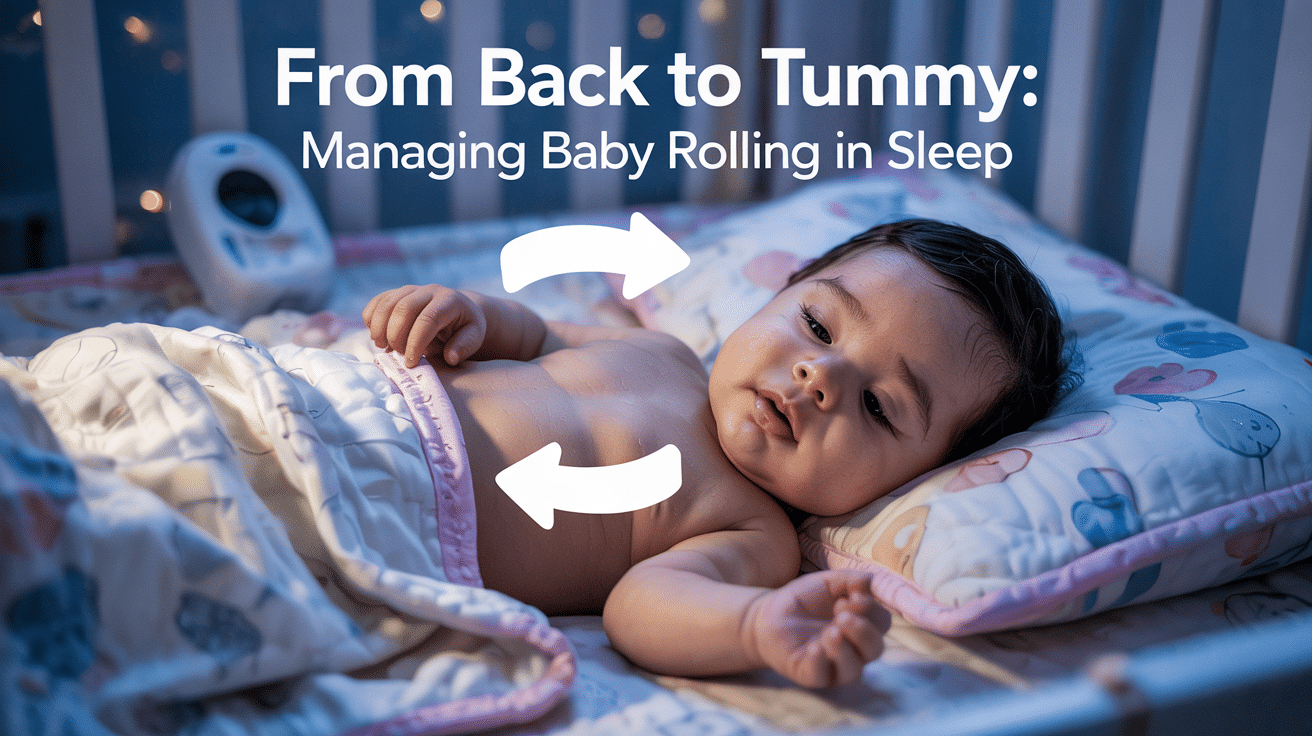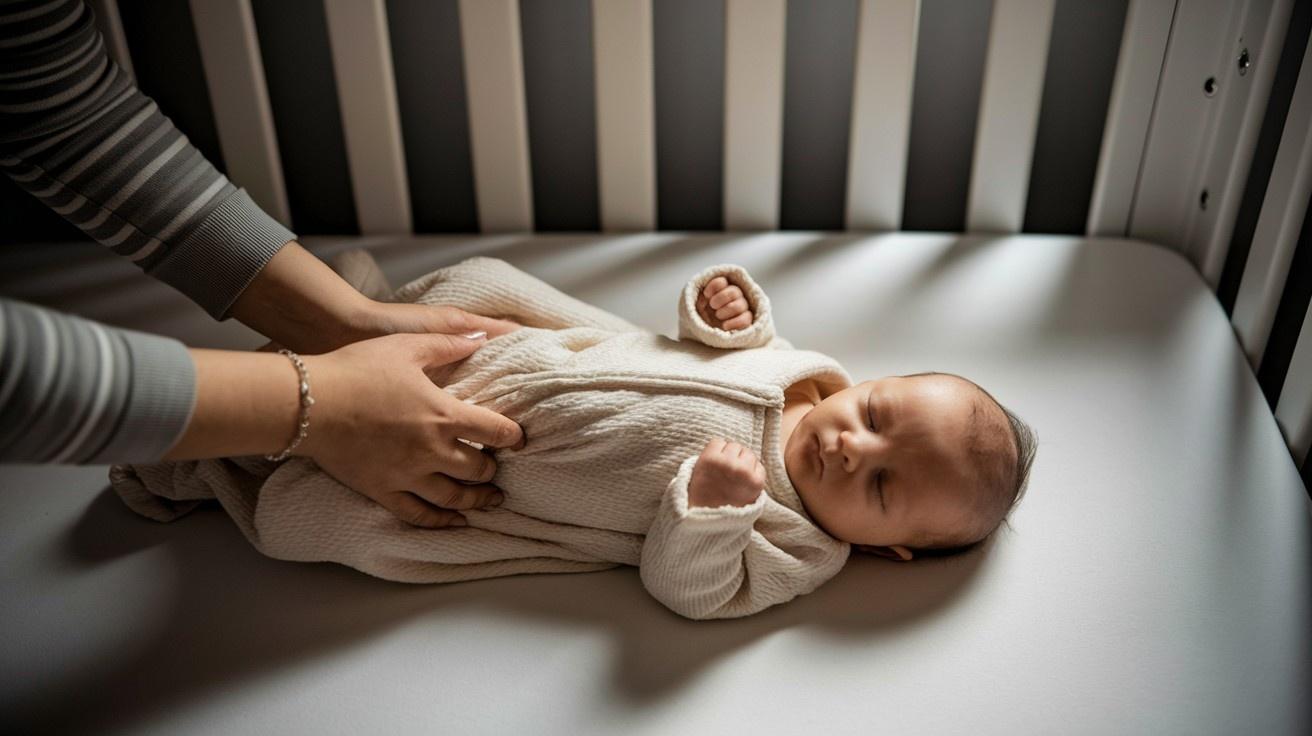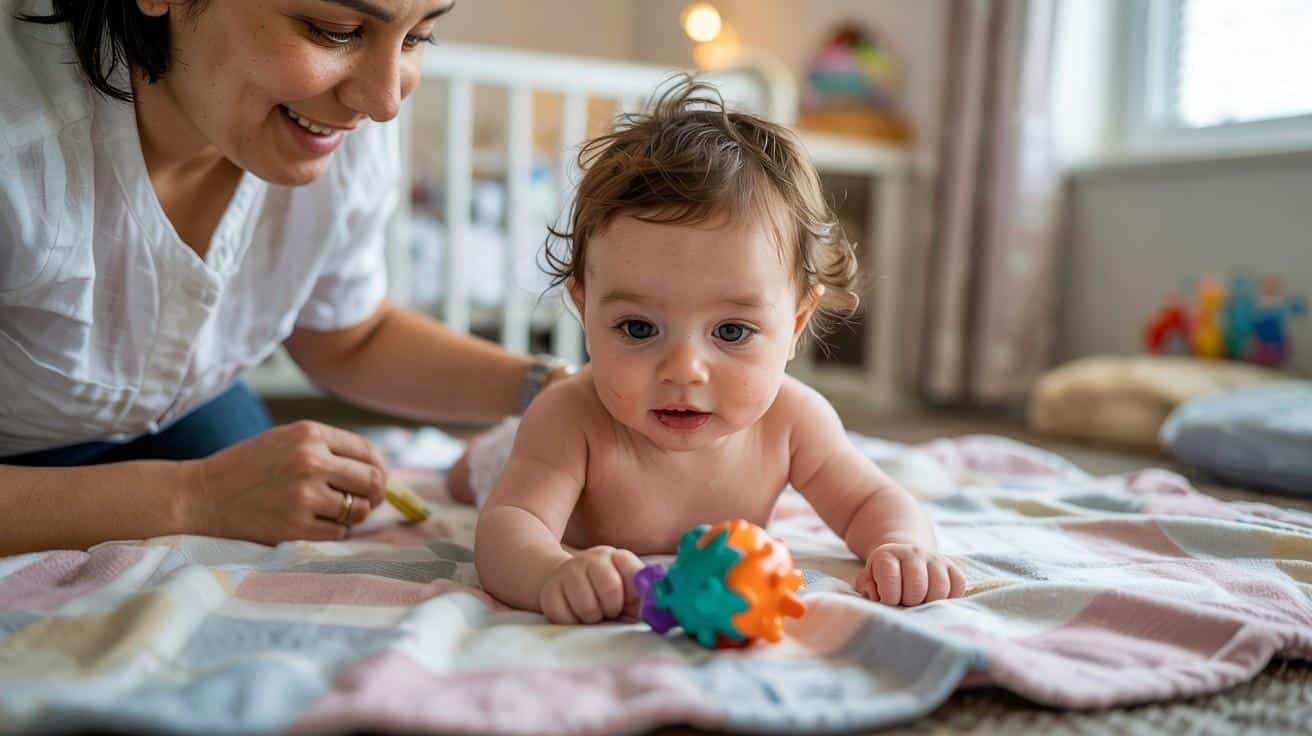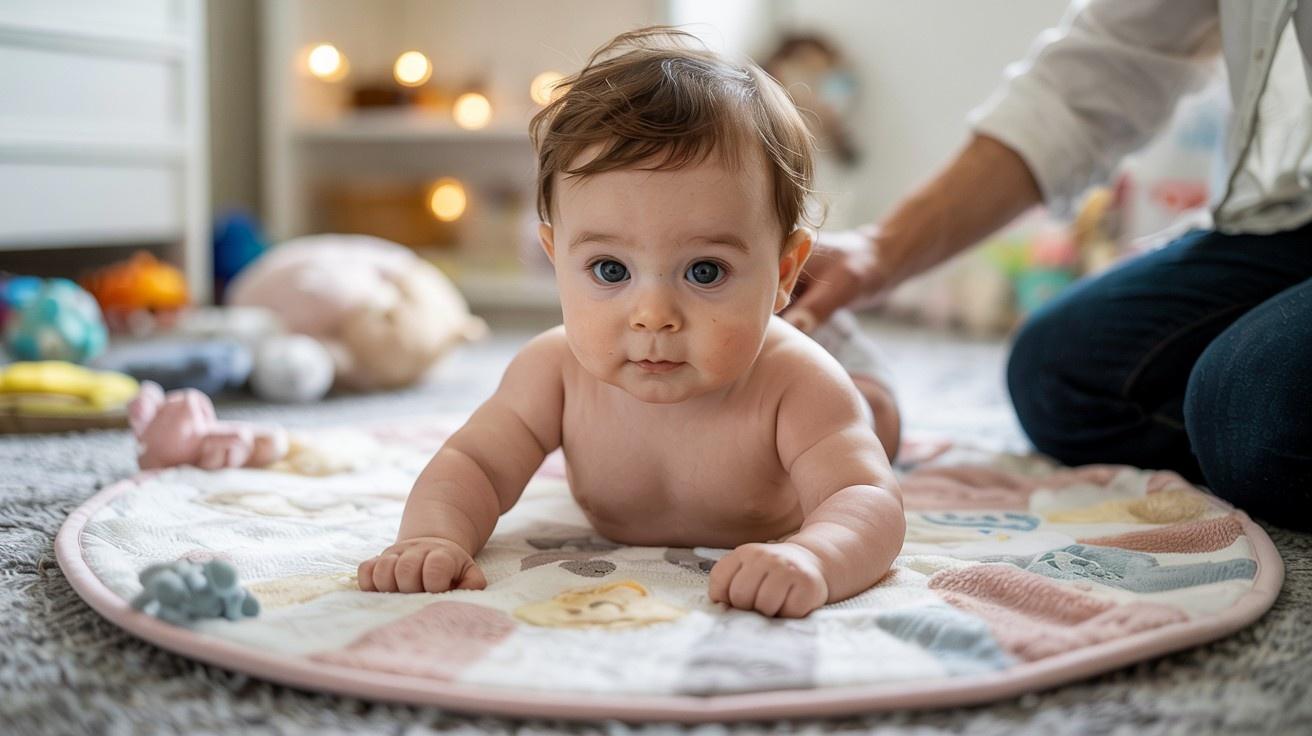
It’s 3 AM, and you wake up to check on your baby—only to find them sleeping soundly on their tummy when you definitely put them down on their back!
Don’t panic. You’ve just witnessed an important milestone in your baby’s development.
When babies start rolling over in their sleep, it marks a significant step in their growth. This natural movement shows their muscles are getting stronger and their coordination is improving.
While this milestone brings excitement, it also raises questions about sleep safety and what parents should do.
In this guide, we’ll explore why babies roll, when to expect this milestone, how to keep them safe, and what to do when you find your little one in a new sleep position. Understanding this development will help you handle this phase with confidence.
Why Babies Roll in Their Sleep?
Babies roll in their sleep as they grow and develop new skills. This natural movement starts when they get stronger muscles, usually between 3-5 months old.
Rolling helps babies learn about their bodies and how to move. Most babies roll from back to tummy first. It might seem scary when you find your baby in a new position, but rolling is a healthy sign that your baby is getting stronger.
Developmental Milestones and Muscle Strength
Babies typically start rolling between 3-5 months. You’ll notice them practicing during tummy time first. Signs your baby is getting ready to roll include:
- Pushing up on arms during tummy time
- Rocking side to side
- Kicking legs with more strength
- Rolling partway to their side
Reasons for Rolling in Sleep
Babies roll in their sleep to practice their new skills. The quiet of nighttime gives them space to work on moving without distractions.
Rolling also helps some babies get comfortable and fall asleep better. Some babies roll to self-soothe when they wake up during the night.
Parenting Hack: Place a small towel rolled up on each side of your baby during supervised naps to help them get used to the feeling of rolling and develop muscle memory.
Safe Infant Sleep Practices

Creating a safe sleep space is vital for your baby. Always place babies on their backs to sleep, use a firm mattress, and keep the crib clear of toys, blankets, and bumpers.
These simple steps lower the risk of sleep-related problems. If your baby rolls over on their own, it’s okay as long as they can roll both ways.
Pediatrics Guidelines
The American Academy of Pediatrics (AAP) recommends putting babies to sleep on their backs every time. Use a firm sleep surface like a crib mattress with a fitted sheet.
Keep the sleep area free from:
- Blankets and pillows
- Stuffed animals
- Crib bumpers
- Loose clothing
Risks of Tummy Sleeping for Infants
Placing babies on their tummies to sleep increases the risk of breathing problems. Babies on their stomachs might have trouble getting enough air or overheat. Soft bedding makes these risks worse by possibly covering a baby’s face or trapping heat.
Did You Know? While SIDS rates have dropped by over 50% since the “Back to Sleep” campaign began in 1994, it remains the leading cause of death for babies between 1 month and 1 year old.
What to Do When Baby Rolls in Their Sleep?

When you see your baby rolling over during sleep, don’t panic. For babies under 6 months who can’t roll back yet, gently turn them onto their backs.
Older babies who can roll both ways can usually stay in the position they choose. Always check that the sleep area is clear of items that could cause trouble.
Gently Repositioning the Baby
For babies under 4-5 months, roll them back gently without waking them. Use a slow, steady motion by:
- Placing one hand on the baby’s side
- Supporting their head with your other hand
- Turning them smoothly onto their back
Once babies can roll both ways (usually by 6 months), it’s generally safe to let them find their preferred sleep position.
Transition from Swaddling
Stop swaddling when your baby shows signs of rolling, usually around 2-3 months. Swaddled babies can’t use their arms if they roll to their tummies, which isn’t safe. Switch to a sleep sack that lets arms move freely. Many babies sleep well in sleep sacks until they’re toddlers.
| AGE | SWADDLING RECOMMENDATION |
|---|---|
| 0-2 months | Safe if baby shows no rolling |
| 2-3 months | Watch for rolling signs; prepare to transition |
| 3+ months | Stop swaddling; use a sleep sack instead |
Adjusting the Sleep Environment
Keep the crib free of items that could harm your baby. Don’t use sleep positioners or wedges, as these can be dangerous. Make sure the crib has:
- A firm mattress with a fitted sheet
- No blankets, pillows, or toys
- No bumper pads
- Nothing hanging near that baby could grab
Managing Rolling Behavior

Help your baby master rolling skills during awake time. The more comfortable they become with rolling both ways, the safer they’ll be in the crib.
Create a safe play area on the floor with a blanket where they can practice moving. Talk to them and smile to make practice fun.
Increasing Tummy Time During the Day
Give your baby plenty of tummy time when they’re awake. Start with short sessions (3-5 minutes) several times a day. As they get stronger, increase the time. During tummy time:
- Get down on their level and talk to them
- Place colorful toys just out of reach
- Encourage pushing up on arms
Parenting Hack: Create a “rolling ramp” using a folded towel placed under your baby’s chest during tummy time. The slight angle makes it easier for them to experience rolling and builds confidence.
Adjusting Sleep Arrangements
Move your baby from a bassinet to a crib when they starts showing signs of rolling. A crib gives more space to move safely.
Place the crib away from windows, cords, and furniture they could reach. A video monitor helps you check on them without disturbing their sleep.
When Do Babies Roll Over?

Most babies start rolling between 3-5 months old. They usually roll from tummy to back first because it’s easier.
Rolling from back to tummy takes more strength and happens around 5-7 months. Don’t worry if your baby is a little earlier or later – every baby develops at their own pace.
Typical Age Range and Sequence
Babies develop rolling skills in this general pattern:
- 3-4 months: May roll tummy to back (easier)
- 4-6 months: Become stronger rollers
- 5-7 months: Usually master rolling back to tummy
- 7-8 months: Can roll in both directions easily
Remember that some babies skip certain movements or develop skills in a different order.
Wrapping It Up
Your baby’s path from staying exactly where you place them to suddenly rolling over marks an exciting chapter in their development.
This milestone changes not just how they sleep but also how you need to approach their sleep environment.
Remember that each baby develops at their own pace—some roll earlier, others later. The key is ensuring their sleep space remains safe as they explore these new movements.
By following the guidelines we’ve shared, you can support this important stage while keeping nighttime worries at bay.
As with all parenting challenges, this phase, too, will pass. Soon, rolling will give way to sitting, crawling, and eventually walking.
For now, celebrate this achievement, adjust as needed, and take plenty of pictures—your stationary baby is officially on the move!
If you’re interested in more informational content on mothers and babies, feel free to click here and explore other blogs that you might enjoy.
Frequently Asked Questions (FAQs)
Will My Baby Roll at Night if They Haven’t Rolled During the Day?
Yes, some babies actually roll for the first time during sleep when they’re relaxed and not thinking about it.
Can Rolling Cause My Baby to Get Stuck Against the Crib?
Modern cribs are designed with proper spacing to prevent getting stuck, so this isn’t a concern with a standard crib.
Should I Buy a Movement Monitor for My Baby?
Movement monitors aren’t medically necessary but might provide peace of mind if you’re anxious about your baby’s rolling.
Will Rolling Affect My Baby’s Sleep Quality?
Some babies sleep better after learning to roll, while others may wake themselves up temporarily until they adjust.

